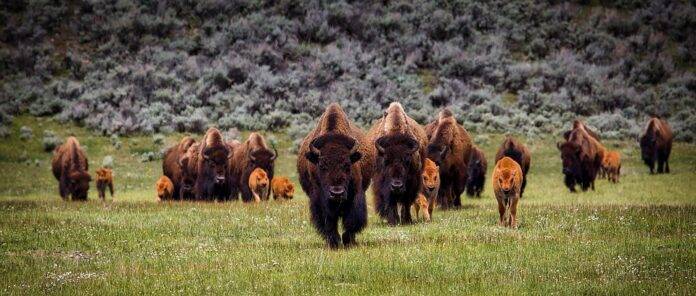Climate Change and Bison Farming Challenges and Adaptation Strategies
Climate change poses significant challenges to bison farming, impacting the health and productivity of these iconic animals. As temperatures rise, extreme weather events become more frequent, and natural habitats are altered, bison farmers must adapt to ensure the sustainability of their operations. In this report, we will explore the specific challenges faced by bison farmers due to climate change and examine the adaptation strategies that can be implemented to mitigate these challenges.
Challenges Faced by Bison Farmers
1. Changes in Grazing Patterns
One of the primary challenges faced by bison farmers is the changing patterns of grazing behavior due to climate change. As temperatures rise, bison may alter their grazing habits, leading to overgrazing in certain areas and underutilization of others. This can result in decreased pasture health and productivity, impacting the overall well-being of the bison herd.
2. Increased Risk of Disease
Climate change can also increase the risk of disease outbreaks among bison herds. Warmer temperatures and changes in precipitation patterns can create favorable conditions for the spread of diseases such as anthrax and brucellosis. Bison farmers must implement proactive measures to prevent and control disease outbreaks to protect the health of their animals.
3. Water Scarcity
Water scarcity is another significant challenge faced by bison farmers in the face of climate change. Drought conditions and reduced water availability can have a detrimental impact on bison health and productivity. Farmers must implement water conservation measures and ensure adequate water sources for their herds to thrive in the face of changing climate conditions.
Adaptation Strategies for Bison Farmers
1. Diversification of Grazing Areas
To address changes in grazing patterns, bison farmers can implement a strategy of diversifying grazing areas. By rotating grazing locations and implementing rest periods for pasture recovery, farmers can maintain the health and productivity of their pastures while accommodating changes in bison grazing behavior due to climate change.
2. Disease Prevention and Control Measures
Implementing disease prevention and control measures is essential for bison farmers to mitigate the increased risk of disease outbreaks due to climate change. Vaccination programs, regular health monitoring, and biosecurity protocols can help prevent the spread of diseases among bison herds and protect the overall health of the animals.
3. Water Management and Conservation
Effective water management and conservation strategies are critical for bison farmers to address water scarcity challenges. Installing water storage facilities, implementing efficient irrigation systems, and monitoring water usage can help ensure a stable water supply for bison herds, even in the face of drought conditions and reduced water availability.
Financial Considerations
The implementation of adaptation strategies for bison farming in the face of climate change can involve significant financial costs. Diversifying grazing areas may require investments in fencing, water infrastructure, and pasture management practices. Disease prevention and control measures may involve expenses for vaccinations, veterinary care, and biosecurity protocols. Water management and conservation strategies can require investments in water storage facilities, irrigation systems, and monitoring equipment.
Conclusion
In conclusion, climate change poses significant challenges to bison farming, impacting grazing patterns, disease risk, and water availability. However, by implementing adaptation strategies such as diversifying grazing areas, disease prevention and control measures, and water management and conservation strategies, bison farmers can mitigate these challenges and ensure the sustainability of their operations. While there may be financial costs associated with implementing these strategies, the long-term benefits of protecting bison health and productivity in the face of climate change far outweigh the costs. By taking proactive measures to adapt to changing climate conditions, bison farmers can secure the future of their operations and the well-being of their herds.




